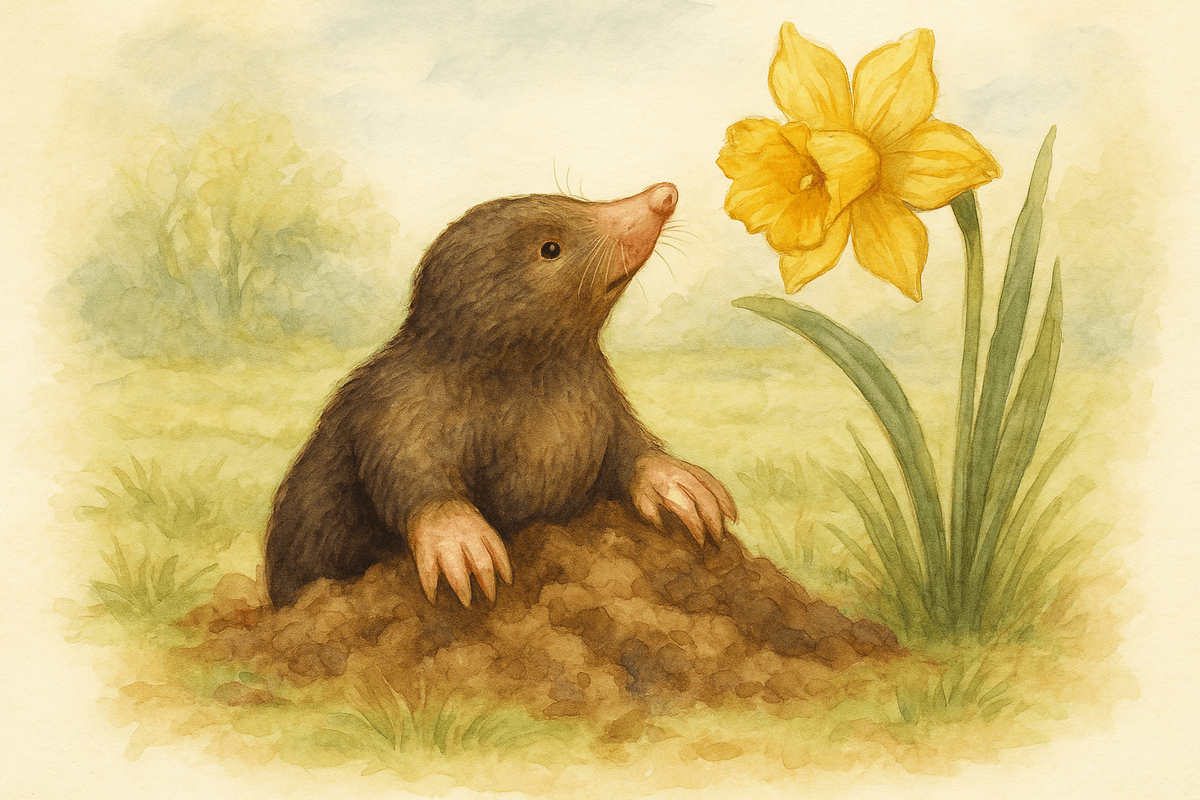Moles in the Lawn — and What to Do About Them
Every so often I’ll notice a little ridge running through the grass, or a small mound of soil that wasn’t there the day before. That’s when I know a mole has moved in.
They’re funny little things — velvety, nearly blind, living most of their lives underground — and they’re really just after worms and grubs. They don’t actually eat the grass, but their tunneling can lift the turf like a carpet, leaving soft patches and little eruptions of soil.
In the Pacific Northwest, with our soft, damp soil and generous earthworm populations, it’s perfect mole country. I try not to take it personally — they’re just doing what moles do — but I also don’t want the whole lawn turned into a patchwork quilt of tunnels.
Gentle, native-friendly ways to deter them
Over the years I’ve tried a few different approaches, and these are the ones that seem to work without upsetting the balance of the garden.
1. Castor oil repellents
There are several natural products that rely on castor oil — the scent and taste make the soil less appealing to moles. I’ve had good results with I Must Garden Mole & Vole Repellent (hose-end spray) and Bonide MoleMax (granules). Both are biodegradable and safe around pets, pollinators, and native soil life.
The key is to apply them when the soil is moist so the oil can soak into the tunnels. A light watering afterwards helps carry it down where the moles are.
2. Encourage balance, not perfection
Moles love a buffet of worms and insects. If the lawn is very damp or over-watered, it can draw them in. Aerating compacted areas and checking irrigation schedules can make a big difference. Good drainage helps — and your plants will thank you too.
3. Create deterrent borders
If certain beds are repeat targets, I’ve had success planting borders of daffodils, marigolds, or alliums. Moles don’t like the smell of these roots. Around vegetable beds, a buried strip of wire mesh can stop new tunnels from entering.
4. Last resorts
If you have heavy activity that repellents don’t deter, there are non-chemical traps and even solar sonic spikes that gently vibrate the soil. These are best used sparingly and only after trying the softer options first.
A note on coexistence
It’s tempting to see moles as pests, but they also loosen soil and eat grubs that might otherwise chew on roots. When possible, I try to nudge them along rather than wage war.
In time, they usually move on — and the lawn recovers quickly once the soil settles and grass grows through again.
Gardening in the PNW is often about balance: between rain and sun, wild and tended, perfection and peace with a little imperfection. Moles are simply one more reminder that the garden is alive beneath our feet.
Enjoying this post?
If you love the whimsy and want to support more PNW garden guides, you can buy me a coffee.
🌼 Buy Me a Coffee


